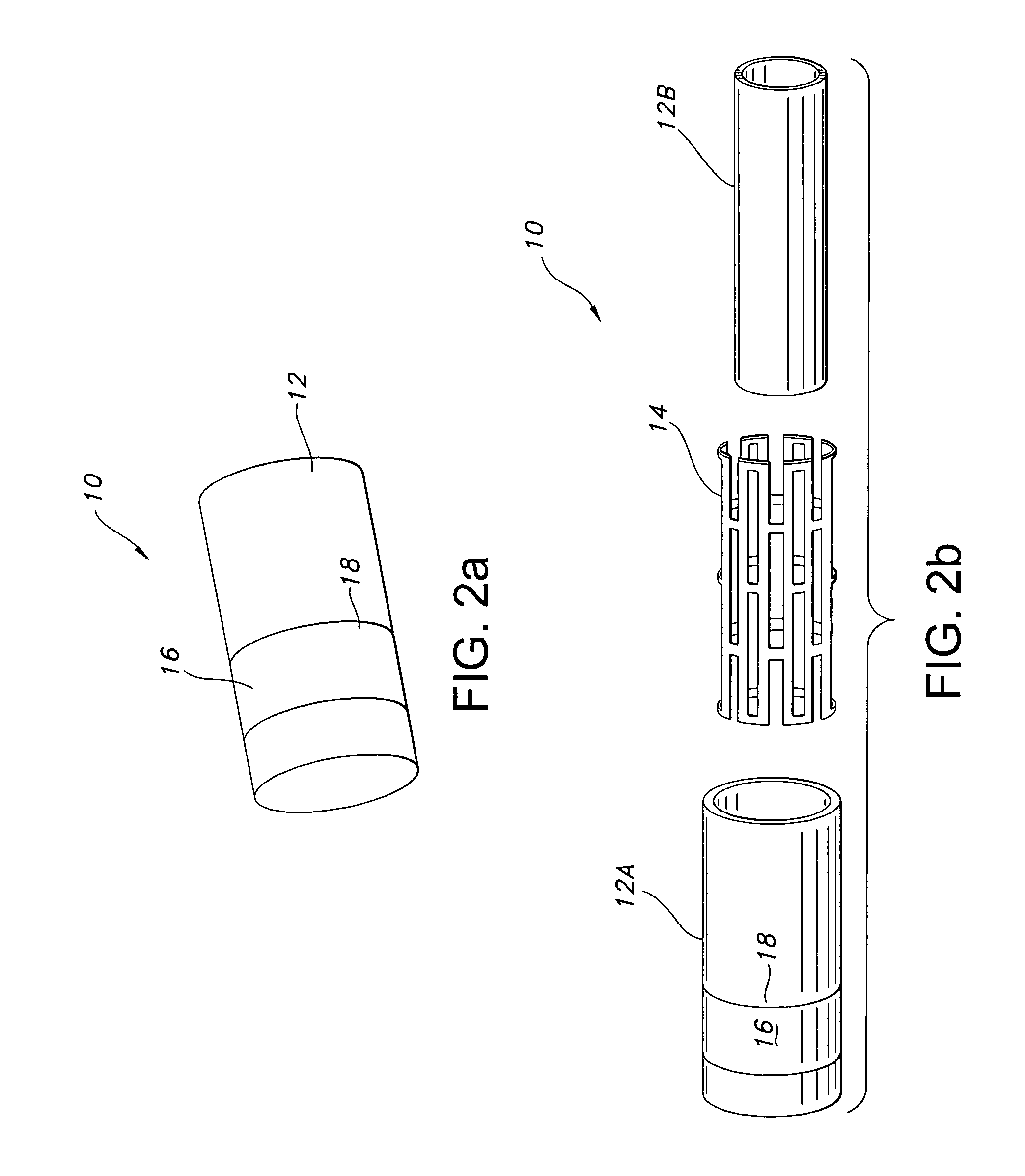Implantable prosthesis with displaceable skirt
a technology of vascular prosthesis and skirt, which is applied in the field of tubular prosthesis, can solve the problems of internal bleeding, leakage between the vascular prosthesis and the vessel wall, and the technique, which requires open surgery, etc., and achieves the effect of active inhibition
- Summary
- Abstract
- Description
- Claims
- Application Information
AI Technical Summary
Benefits of technology
Problems solved by technology
Method used
Image
Examples
first embodiment
[0029] With reference to FIGS. 3a-3e, the skirt 16 is shown, which is tapered downwardly relative to the tubular body 12. Thus, with reference to FIG. 3b, the skirt 16 is intended to be tapered to a greater diameter in a direction of blood flow, as represented by the arrow. The skirt 16 is joined to the tubular body 12 at a juncture located at, or in proximity to, an upstream end of the tubular body relative to blood flow. FIGS. 3a-3c show the skirt being joined at an upstream end 20, while FIG. 3d shows the skirt 16 being spaced from the end 20. It is preferred that the skirt 16 be spaced a distance t in the range of 2-15 mm from the end 20.
[0030] In an initial state, as shown in FIG. 3a, the skirt 16 lies flat or relatively flat in overlapping a portion of the tubular body 12. With this configuration, the profile of the prosthesis 10 can be minimized in easing implantation thereof. Once implanted, such as in an aorta AA, as shown in FIG. 3c, at least a portion of the peripheral ed...
second embodiment
[0036] As a variation of the second embodiment, the first portion 24 may be trough-shaped as shown in FIGS. 4d and 4e. In an expanded, or partially expanded state, the scaffold 22 is configured such that the first portion 24 includes a trough-shaped depression which may be V-shaped, U-shaped or the like. As shown in FIG. 4e, with the skirt 16 being at least partially expanded, blood flow that bypasses the tubular body 12 (which would normally constitute endoleakage) applies hemodynamic pressure as indicated by arrow 1 into the first portion 24 which, then results in normal force applied against the sides of the trough (arrows 2). These forces cumulatively attempt to flatten the first portion 24, resulting in further radial expansion (arrow 3) of the skirt 16, and, thus, a tighter seal against a surrounding wall. With the alternative variation of FIGS. 4d and 4e, potential endoleakage is converted to increased sealing force.
[0037] With reference to FIGS. 5a-5e, a further embodiment o...
PUM
 Login to View More
Login to View More Abstract
Description
Claims
Application Information
 Login to View More
Login to View More - R&D
- Intellectual Property
- Life Sciences
- Materials
- Tech Scout
- Unparalleled Data Quality
- Higher Quality Content
- 60% Fewer Hallucinations
Browse by: Latest US Patents, China's latest patents, Technical Efficacy Thesaurus, Application Domain, Technology Topic, Popular Technical Reports.
© 2025 PatSnap. All rights reserved.Legal|Privacy policy|Modern Slavery Act Transparency Statement|Sitemap|About US| Contact US: help@patsnap.com



